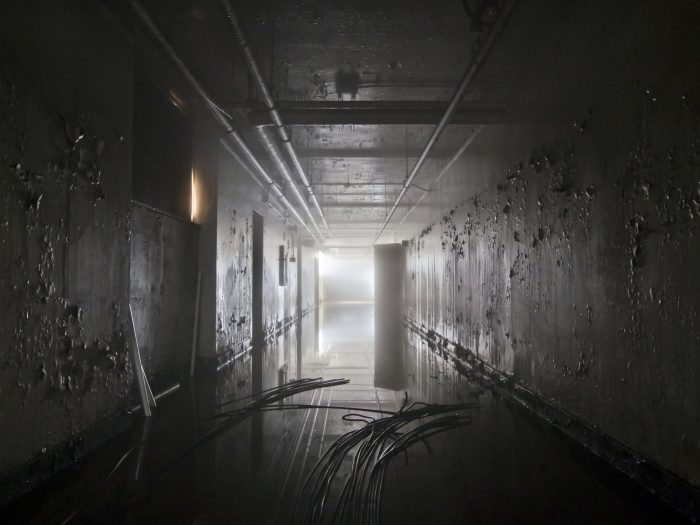Sponsored: Philadelphia Insurance Companies
Tackling the Unforeseen Environmental Risks of Climate Change

Climate change has fundamentally altered the risk landscape for both insurers and insureds. Wildfires, flooding, droughts and extreme storms are becoming increasing more prevalent in both their frequency and severity. The US was hardest hit, with large stretches of the East Coast pummeled by hurricanes, wildfires in the west, and the Midwest struck by a record number of convective storms.1 These natural, or named peril, events in an aggregate for the insurance industry are causing more frequent catastrophic losses for carriers from business interruption, claims handling, and replacement costs.
Exacerbation of the increased costs has arisen from the materials required to carry out such restoration of property which have become increasingly more expensive due to the scarcity caused by the Covid-19 crisis. In particular, wood and other building materials integral to construction and reconstruction have ballooned the costs to repair properties to like or similar conditions prior to the natural event.
Secondary Environmental Damage from Named Peril Events

Jon Peeples, Vice President, Underwriting at Philadelphia Insurance Companies
In addition to the traditional P&C losses, there is also the added problem of the secondary environmental damage which results from and propagates in the aftermath of a weather event. For example, when floodwaters recede, buildings may become contaminated with mold and/or provide an environment for Legionella overgrowth. These concerns may become exacerbated if the building has been vacant due to an inability to access the property for safety considerations following the named peril event, and / or if the heating and air-conditioning systems or plumbing have been out of use for any extended period of time.
Even when the properties can be accessed, the property may await remediation from qualified contractors due to demand outweighing availability of contractors to perform the necessary repairs. For example, most recently this past winter during the Texas winter storm, many properties’ water pipes burst, causing extensive water damage with mold forming in the drywall and wood frames of buildings. The mold largely formed while waiting for repairs and restoration due to the number of clients needing repairs versus the availability of workers that could perform said repairs.
In contrast to water events, fires present other secondary concerns. Cleanup after a fire can include addressing hazardous releases to the environment on and offsite from the property; especially from manufacturing, assembly operations and warehouse sites where stored chemicals can easily get released. These releases cannot only contaminate the insured’s buildings themselves, but also contaminate the surrounding air, land or waters.
Compounding the issue, many property insurers are now denying claims with environmental secondary damage, arguing that it isn’t covered under the policy, as they themselves struggle to deal with their own rising reinsurance costs.
As such, the knock-on effect of these secondary events is widespread disruption, spiraling costs and lengthy delays to businesses and homeowners trying to get back on their feet. For example, in one case, a casino was flooded and it took six months before a decision was made between the various insurance carriers and remediation experts on how to resolve the issue of mold contamination. During that time the mold problem became significantly worse as it spread through the building because of the damp and humid environment. The company ended up filing a claim of almost $1.5 million for business interruption as well as having to contend with the associated cleanup and rebuilding costs.
P&C Insurer Pushback
“In the past, insurers would pay for the removal of anything on or at the property that was damaged on the basis that it was caused by water,” said Jon Peeples, Vice President, Underwriting at Philadelphia Insurance Companies (PHLY). “Now, they are pushing back hard, refusing to cover anything affected by secondary risks such as mold and Legionella; even if the mold or legionella was caused initially by water damaged building materials.”
That’s why it is critical to have a robust environmental policy in place that will address the problem of mold and other contaminates, as well as the cost of their safe removal and appropriate disposal. Oftentimes, it’s only after an event and a claim denial that insureds realize they aren’t covered for these secondary risks under their property policies.
“We’ve seen an uptick in middle market, operational risk clients buying environmental liability insurance over the last two years,” said Peeples. “It provides another, and often integral, layer of protection for insureds beyond their standard property and casualty policy.”
PHLY provides premises and environmental coverage designed for industrial, commercial, retail, habitational or hospitality facilities. It covers external physical impact to the property as well as within the facility itself, including cleanup, liability and defense costs.
But insurance only goes so far. Insureds also need to be part of the solution by doing everything they practically and feasibly can to protect their homes and businesses before an event happens.
Environmental Audit
In terms of mitigation steps, insureds first need to assess and understand exactly what and where their main risks are by bringing in qualified and appropriate experts to carry out an environmental audit which serves to identify key areas of concern. Only by identifying key areas of concern, can an insured develop an appropriate risk management strategy for their specific exposures.
In addition, companies should look strategically at where their operations are based, and assess the risk of any trending or possible extreme weather events using the flooding and wildfire maps available to the public.
There are other preventative steps that businesses and individuals can take to protect themselves, such as in the case of winter storms, insulating piping to ensure it doesn’t freeze and then burst. Where chemicals are kept on site, they should also be stored in fire retardant boxes, separated from incompatible materials, or moved to isolated areas where fires are less likely to start and spread.
Insureds can also work closely with environmental consultants to devise a plan for how to deal with mold or other contamination quickly should it occur. An example of this option is to bring in a licensed and certified restoration firm to assess the individual property risks, and formalize an emergency response procedures via contract where that firm can respond to emergencies when restoration and repair are needed.
This process not only results in a speedy resolution, but it also enables the insurer to know exactly where clients may stand in terms of remediation and, therefore, be able to process their claim faster.
“At Philadelphia Insurance, we have our own protocols specially designed to manage these kinds of environmental challenges,” said Peeples. “For instance, we help our clients mitigate against and prepare for issues including mold and Legionella, as well as pipe freezing through our Risk Management department as a no cost added value service provision to our insureds. We treat the insurance product as a partnership with our clients; the more educated and prepared they can be for a loss, the better we can serve them in a claim situation.”
Joined-up Approach
The U.S. Federal and state governments have a big role to play in the management of these risks too, just as their counterparts in Europe have been doing with last summer’s unprecedented wildfires and floods.2
Governments can partner in the risk management process too by clearly identifying flood or wildfire zones and either relocating insureds to a safer area or providing them with infrastructure protection such as building dikes or levees.
Insurers, for their part, have been investing heavily in trying to identify and understand the root causes and impact of climate change, looking at key trends and patterns in their data. This has often translated into more favorable rates for insureds living in or operating in less exposed regions.
Reinsurers are also doing their bit by developing improved risk management tools from their data which aggregates primary insurers’ information and data into a macro sphere ripe for powerful analytics and data mining. By using their data, reinsurers are able to help insurers better manage their insureds’ exposures, significantly in areas more susceptible to weather extremes.
As global warming continues to increase and extreme weather events occur on an increasingly more regular basis, so the problem of climate change shows no sign of abating.
Therefore, insureds need to be better prepared than ever before and that means, in part, having a comprehensive environmental risk policy in place to protect them should the worst happen.
“The Texas storm was the one that no one accurately modeled,” said Peeples. “It serves as a sharp example and future reminder of the devastating effects of climate change. Namely, the catastrophic scale at which an extreme weather event can suddenly happen, almost seemingly overnight.
“When the industry gets caught by surprise like that, it is imperative that as a community we take a step back and look at the bigger picture. Just 10 years ago, these kinds of events were few and far between but now they are becoming increasingly common. Therefore insureds, working with their insurers and brokers, have an increasing need to ensure they have the right protections via an insurance solution like an environmental liability policy to protect themselves.”
To learn more about Philadelphia Insurance Companies’ Environmental Liability Insurance solutions, contact Jon Peeples at [email protected] or visit https://www.phly.com/ESdivision/es-environmental.aspx.
1Sigma, Executive Summary, page 1, Swiss Re Institute No.1/2021 Natural catastrophes in 2020: secondary perils in the spotlight, but don’t forget primary-peril risks.
2Sigma, Executive Summary, page 1, Swiss Re Institute No.1/2021 Natural catastrophes in 2020: secondary perils in the spotlight, but don’t forget primary-peril risks.
This article was produced by the R&I Brand Studio, a unit of the advertising department of Risk & Insurance, in collaboration with Philadelphia Insurance Companies. The editorial staff of Risk & Insurance had no role in its preparation.










